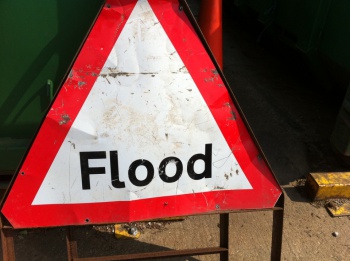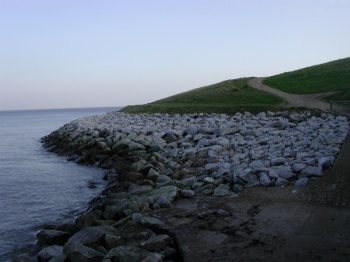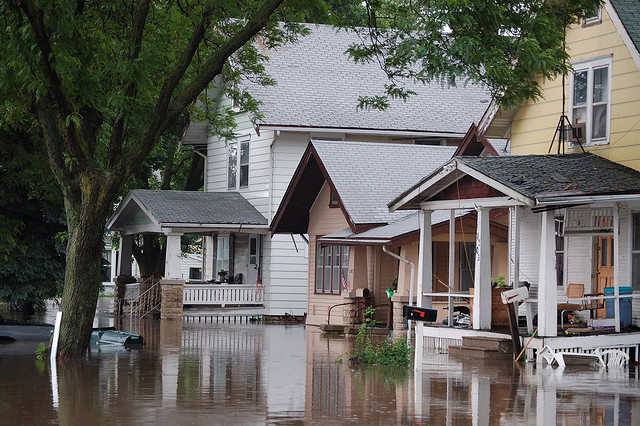 Flood Sign by Howard Lake
Flood Sign by Howard Lake
Floods in the Metro Vancouver area have always been a topic for discussion. They’re only natural since the city is part of the Lower Mainland region, which is considered to have a significantly high vulnerability to flood risk. The region experienced the two largest floods in 1894 and in 1948; however, floods in the spring of 2007 and autumn of 2009 that swept across Vancouver Island convinced officials that it would be unwise to turn a blind eye on danger of this magnitude.
Endangered Areas
Flooding can cover a great part of the Lower Mainland. Barnston Island, Cloverdale, low-lying areas of Maple Ridge, areas west of Hope, White Rock, Richmond, parts of Vancouver, and parts of Surrey are potentially at risk. The Fraser River is one of the rivers with high probability of flooding. Experts say that we can expect floods of similar magnitude as those from 1894 and 1948 occurring in next 50 years.
Flood Protection Infrastructure
 Rip-Rap by Richard Allaway
Rip-Rap by Richard Allaway
The City of Vancouver took measures to prevent flooding in the future by building an extensive flood protection infrastructure along with the integrated flood hazard management program that was started in the Lower Mainland area just after the 2007 flooding. The infrastructure consists of these elements:
- pump stations
- dikes (read more about the Lower Mainland Dike Inventory and Emergency Maps)
- riprap
- wells
- floodboxes – model constructions that allow experts to simulate the flooding conditions and plan flood defences
Flood Restoration Strategy
If you want to minimize the damage done by floods, you have to respond quickly. Not all the damage that floods cause to your property is visible. The most dangerous thing floods bring to your homes are pathogens, bacteria, mould, and other bio-hazards that multiply extremely rapidly. Your house might be swamped by hazardous material within 24 hours of a flood.
 Flooding by US Geological Survey
Flooding by US Geological Survey
It is crucial to start the drying process as soon as you have a chance. Fast response reduces the chance of mould spreading, and the growth of bacteria will be much slower than in a moist environment. The mould immediately starts to corrupt the structure of your property, and once bacteria spread, you might never be able to get rid of them. Bacteria are extremely efficient in contaminating water supplies. It is wise to hire a specialist to check on levels of damage done and a company to help you deal with the situation.
The first thing a flood restoration company does is ensure that the source of the flood has been contained. Secondly, they will pump out any residual standing water out of the property. Thirdly, the evaluation of contamination and human health risk and its containment takes place.
These are the two things flood restoration companies do when you call them:
- Drying – This is the part that needs heavy technical support. Hot-air blowers and dehumidifiers are placed in the affected areas to reduce moisture levels. The drying process usually takes around one week. If the property was damaged severely, it might take up to two weeks to dry it out completely.
- Restoration – It is necessary to prepare the detailed scope of the house to prepare it for repairs. It is strategic to find a flood restoration company that will prepare a quote for your insurance company. Otherwise, it would be hard to undo all the damages to your property.
What if the ocean level were to rise?
Our rivers are not the only waters that have the capability of causing us considerable problems. We added this last paragraph just for your entertainment, but some of the experts on global warming are warning us that this purely hypothetical situation could someday become a serious problems. So, let’s see what will happen if the ocean level were to rise.


